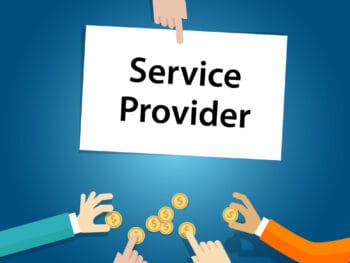
Click Link to Access Free PDF Download
“How Do I Get My Adjusters To Follow My Account Handling Instructions?”
This portion of the agreement outlines the amount of control an employer exercises over a claim and the services to be provided by the insurance carrier or third-party administrator. Issues of control are usually determined by the amount of risk retained by a self-insured employer. For example, the employer in a self-insured environment carries the entire risk or a large portion of the risk in some instances. Self-insured employers should use the risk they carry as leverage on how much control and involvement they carry during a claim.
An insurance carrier or third-party administrator may also provide additional services to handle the claim. These services include:
- Bill review services;
- Utilization review services;
- Independent medical examinations;
- Functional capacity evaluations;
- Structured settlements;
- Medicare Set-asides and compliance services; and
- Defense attorney panels.
These are some services that can be bundled into the claims handling process. Employers who are self-insured or have high retention policies should exercise their leverage to determine what services need to be provided and who should perform them. These are decisions that need to be made on trust. When there is a high level of trust, the employer should be flexible to allow the administrator to make decisions based on their experiences that drive effective workers’ compensation program cost enhancement.
Selecting the Right Partner for Claim Handling
People do business with people that they like. This applies to selecting the correct partner in an effective workers’ compensation program. Employers and interested stakeholders need to be proactive when selecting a suitable insurance carrier or third-party administrator.
- In-Person Meeting: It is vital to meet the people working on the claims – the claim team and individual claim handlers. With the increasing willingness of people to travel, now is the time to schedule an in-person visit. During this visit, it is important to learn about the team’s claim handling philosophy, understand processes and procedures, and share information.
- Chairside Visits: When visiting a claim team’s office, it is essential to meet individual claim handlers and learn about their background and what drives them. Important information to gather should include understanding the claim in-take process, how claims are handled (medical-only, lost-time claims, and catastrophic claims), and continuing to gather information.
- Service Provider Engagement: It is also vital to meet various service providers and vendors of a claim team. An interested stakeholder can host a “vendor day” to better understand the services provided and initiatives driven by these stakeholders. This can also be used as an opportunity to learn how they are driving cost savings through their services
- Host the TPA or Carrier at your Workplace: Part of the process should also include hosting the third-party administrator or insurance carrier at your place of employment. This is an opportunity to share with them your company’s culture, work activities, and the challenges faced daily.
It is also essential to know the claim management team who should contact various issues. This included delineating an explicit claim of command to ensure the individual claim handler can effectively do their job. By taking these steps, interested stakeholders will have a greater sense of control and trust with the claim team and individual claim handlers.
Conclusions
Now is the time to be proactive when selecting the right claim team. This requires employer representatives and other interested stakeholders to be practice on the insurance company or third-party administrator they select. During this process, it is critical to meet with the people you will be working with and understand their processes and procedures. It is also essential to outline expectations for handling a clam and selecting service providers and vendors. When this is done correctly, the claim handling process will be efficient and reduce workers’ compensation program costs.
 Author Michael Stack, CEO Amaxx LLC. He is an expert in workers’ compensation cost containment systems and helps employers reduce their workers’ comp costs by 20% to 50%. He works as a consultant to large and mid-market clients, is a co-author of Your Ultimate Guide To Mastering Workers Comp Costs, a comprehensive step-by-step manual of cost containment strategies based on hands-on field experience, and is the founder & lead trainer of Amaxx Workers’ Comp Training Center, which offers the Certified Master of Workers’ Compensation national designation.
Author Michael Stack, CEO Amaxx LLC. He is an expert in workers’ compensation cost containment systems and helps employers reduce their workers’ comp costs by 20% to 50%. He works as a consultant to large and mid-market clients, is a co-author of Your Ultimate Guide To Mastering Workers Comp Costs, a comprehensive step-by-step manual of cost containment strategies based on hands-on field experience, and is the founder & lead trainer of Amaxx Workers’ Comp Training Center, which offers the Certified Master of Workers’ Compensation national designation.
Contact: mstack@reduceyourworkerscomp.com.
Workers’ Comp Roundup Blog: http://blog.reduceyourworkerscomp.com/
©2022 Amaxx LLC. All rights reserved under International Copyright Law.
Do not use this information without independent verification. All state laws vary. You should consult with your insurance broker, attorney, or qualified professional.














